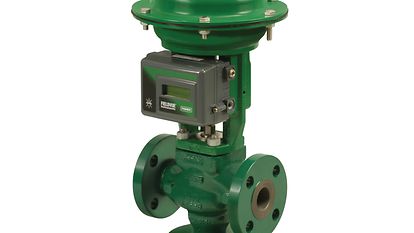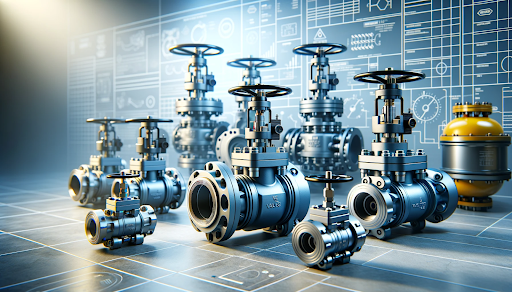Discovering the Performance of Modern Control Valves in Industrial Applications
Discovering the Performance of Modern Control Valves in Industrial Applications
Blog Article

Maximize Energy Savings and Comfort With Advanced Structure Automation Controls
In the realm of modern style and center administration, the combination of advanced structure automation manages stands as a critical improvement. The convergence of modern technology and sustainability has birthed a new era where power performance, comfort optimization, and operational streamlining are no more possible truths but remote ambitions. By using the power of automation, structures can adapt, react, and progress in ways that were as soon as inconceivable. The possibility for considerable energy cost savings and enhanced comfort is not just a guarantee but an opportunity waiting to be satisfied. This standard shift in structure administration holds the key to opening a world where environmental conscientiousness and owner well-being sympathetically exist together within the wall surfaces of our structures.
Energy Efficiency Perks
Power performance advantages can substantially lower power usage and operational costs in buildings. Energy-efficient systems, such as sophisticated building automation controls, can optimize the use of sources like lights, air conditioning, and heating, leading to lower energy costs over time.
Additionally, improved energy performance can lengthen the life-span of structure devices and systems. By operating much more effectively, HVAC systems, lighting fixture, and other structure elements experience less wear and tear, causing decreased upkeep and replacement expenses. Furthermore, energy-efficient buildings often regulate higher residential property values and rental prices, offering long-term monetary benefits to proprietors.
Moreover, energy efficiency can boost passenger comfort and performance. Correctly managed indoor settings with optimal illumination and thermal conditions produce an even more pleasurable and conducive work space, causing improved worker contentment and efficiency. On the whole, the energy effectiveness advantages associated with advanced structure automation controls are complex, encompassing expense financial savings, environmental stewardship, and owner well-being.
Improved Convenience Control
Enhancing convenience control in building environments requires an advanced combination of sophisticated automation systems for optimum occupant health. By making use of sophisticated building automation controls, facilities can tailor the indoor environment to meet the details requirements and preferences of residents. control valves.
By including these advanced controls, structures can not only improve convenience yet additionally boost power performance by maximizing system operations based on real occupancy and use patterns. Ultimately, prioritizing owner comfort with innovative automation systems leads to a more satisfying and healthier indoor setting.
Operational Effectiveness Improvements

Additionally, the implementation of real-time tracking and analytics devices enables structure operators to determine power ineffectiveness and functional abnormalities quickly. By continually keeping an eye on power usage patterns and system performance metrics, adjustments can be made in real-time to maximize energy usage and make certain peak operational effectiveness. control valves. In addition, including demand reaction approaches right into structure automation controls can better enhance operational you can find out more effectiveness by dynamically readjusting power usage based on grid conditions and pricing signals
Indoor Climate Optimization
Efficient indoor environment optimization is a basic aspect of building automation controls, making certain residents' comfort and wellness while taking full advantage of power financial savings. By making use of sophisticated sensors and controls, developing automation systems can constantly check and readjust temperature level, moisture degrees, air high quality, and air flow to develop an optimal indoor setting. Keeping regular and comfy problems not just boosts passenger satisfaction but likewise enhances performance and general health.
Indoor climate optimization also plays a vital function in energy efficiency. By fine-tuning air flow, air conditioning, and heating systems based upon real-time data and tenancy patterns, developing automation controls can significantly lower power consumption - control valves. For circumstances, applying approaches such as demand-controlled ventilation and thermal zoning can help lessen power waste while making sure that each area of the structure obtains the needed conditioning.

Sustainable Atmosphere Development
Building automation regulates not only enhance interior climate conditions for energy efficiency and passenger convenience however likewise lay the foundation for developing a lasting atmosphere with calculated administration of systems and resources. By integrating innovative building automation technologies, such as sensing units, actuators, and smart software program, facilities can check and readjust energy use in real-time to lessen waste and lower their carbon impact. These systems allow predictive maintenance, identifying possible problems prior to they rise and optimizing tools efficiency to enhance long life and learn this here now effectiveness.
Moreover, lasting setting production expands beyond energy monitoring to include water conservation, waste decrease, and indoor air quality improvement. Building automation controls can regulate water usage, spot leakages, and guarantee proper garbage disposal practices, adding to general sustainability initiatives. Furthermore, by monitoring and regulating ventilation and purification systems, these innovations enhance owner health and wellness and performance while reducing power consumption related to HVAC operations.
Final Thought
In verdict, progressed structure automation manages deal considerable advantages in terms of energy savings, convenience control, operational effectiveness, interior environment optimization, and creating a lasting atmosphere. By implementing these controls, structures can accomplish optimum efficiency while decreasing power intake and improving resident convenience. It appears that making use of advanced automation innovation is vital in improving building performance and developing a more lasting future.
Power efficiency benefits can considerably decrease power consumption and operational costs in buildings. Generally, the power effectiveness advantages linked with innovative structure automation controls are complex, incorporating cost financial savings, ecological Visit Website stewardship, and resident well-being.
Additionally, incorporating demand response strategies into structure automation controls can additionally improve operational performance by dynamically readjusting power use based on grid conditions and pricing signals.
Structure automation manages not only maximize indoor climate problems for energy efficiency and owner comfort but additionally lay the structure for creating a lasting atmosphere through critical administration of sources and systems.In verdict, advanced structure automation manages offer significant benefits in terms of power cost savings, convenience control, functional efficiency, interior environment optimization, and creating a sustainable atmosphere.
Report this page